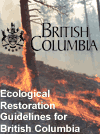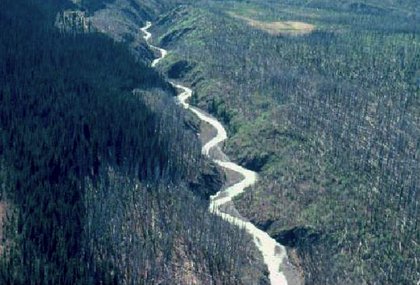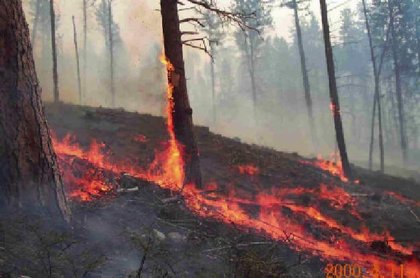 |
|
Concepts of Scale in Ecological Restoration Ecosystems
function at multiple spatial and temporal scales (Holt 2000), and
so does ecosystem restoration. Table 2 provides examples
of scales of restoration. Generally, examining ecosystem restoration
needs at the scale of ecological
processes is the most effective and appropriate way of
addressing ecosystem damage, as it is ecological processes that
regulate the condition of ecosystems. Natural disturbances and natural
disturbance patterns are prime ecological processes that pertain
to ecological restoration. It is implicit in process-based restoration
that if the processes that were affected are restored, then other
ecosystem components should also recover. This is sometimes referred
to as the coarse filter
approach. However, specific habitat
needs or components within these ecosystems are often a crucial
component of a restoration program. For example, wildlife
trees are a critical habitat component for cavity nesters.
The smallest scale of restoration is at the level of the individual
species.
While it isn't generally efficient to focus on one species, as opposed
to a whole ecosystem, there are sometimes compelling reasons to
do so. Restoration at the scale of habitat and species is sometimes
referred to as the fine
filter approach.
Coarse and Fine-Filter Restoration The
coarse filter concept is an ecosystem-based
approach that assumes most species will have their needs met by
restoring or protecting the fundamental structure of an ecosystem.
For example, restoring natural flows to a degraded wetland can provide
conditions suitable for the re-establishment of most wetland species.
Fire-based restoration is another coarse-filter process, where it
is assumed that the opening of forests or grasslands by fire will
meet the needs of species dependant on these habitats. However,
the fine filter approach should always
be used in tandem with the more generic coarse filter approach.
While it is impossible to manage for all the different species or
attributes in an ecosystem, there are always some that will require
individual attention. In the example of fire restoration, specific
habitat features, including wildlife trees or coarse woody debris,
may need to be preserved or created, weedy invasive species may
need monitoring and control, and the timing or location of burning
may need to take into account the nesting season of certain birds. |
||||||||||||
 

 
|
|||||||||||||
|
|
|||||||||||||


